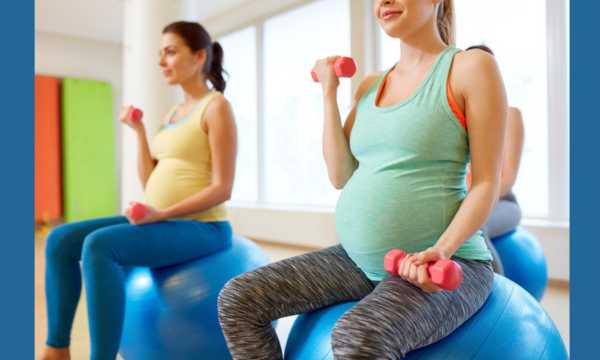Pregnancy is a time of incredible transformations, both physical and emotional.
Anúncios
During these months, staying active is fundamental for the health of both mother and baby. Appropriate exercises can bring a series of benefits, such as improving mood, increasing energy, and facilitating labor.
In this article, we will explore the importance of exercise during pregnancy and how to create a safe and effective routine.
Anúncios
It’s natural for many expectant mothers to have doubts about which physical activities are safe and appropriate. The most important thing is to listen to your body and consult a healthcare professional before starting any exercise routine.
Taking care of your health is essential, and small adjustments can make all the difference. We will address low-impact exercises that are ideal for each trimester, promoting healthy and enjoyable activity.
Anúncios
In addition to the physical benefits, exercising during pregnancy can also help prepare the mind for labor and the new phase of motherhood.
With practical tips and examples of exercises, this article aims to encourage all expectant mothers to move safely and mindfully. Let’s get started?
1.Importance of Exercise During Pregnancy
Exercising during pregnancy is essential for maintaining both physical and emotional well-being. Here’s why:
1.1 Maintains a Healthy Weight: Regular exercise helps in managing a healthy weight, which is crucial for your overall health during pregnancy.
1.2. Improves Blood Circulation: Physical activity promotes better blood flow, which can help reduce common pregnancy-related discomforts like swelling.
1.3. Enhances Sleep and Reduces Discomfort: Exercise contributes to better sleep quality and can ease physical discomfort, helping you feel more at ease during pregnancy.
1.4. Boosts Emotional Well-being : Staying active enhances feelings of well-being and relaxation, offering emotional support through hormonal changes.
1.5. Prepares the Body for Labor : Strengthening muscles and improving endurance can make the birthing process easier and smoother.
1.6. Increases Flexibility : Engaging in physical activities improves flexibility, which can aid during labor.
Remember, every pregnancy is different. Always consult with your doctor before starting or changing your exercise routine to ensure both your safety and your baby’s well-being.
2.Low-Impact Exercises for Each Trimester
First Trimester
In the early stages of pregnancy, it’s crucial to opt for low-impact exercises. Some good options include:
- Walking: Simple and accessible, walking helps boost circulation and energy.
- Yoga: Enhances flexibility and reduces stress, while preparing the mind for motherhood.
- Swimming: Relieves pressure on the joints and provides an excellent cardiovascular workout.
During this trimester, focus on staying active but avoid intense exercises. Prioritize activities you enjoy that make you feel good.
Second Trimester
As the pregnancy progresses, the body undergoes significant changes. It’s time to adapt your exercises:
- Pilates: Strengthens the abdominal muscles and improves posture, which is great for supporting the weight of the belly.
- Cycling: Light pedaling is an excellent way to stay active.
- Strength Training: Use light weights or resistance bands to strengthen muscles, especially in the back and legs.

Strength Training (Google Source)
Remember to take breaks and listen to your body. It’s normal to feel more tired as your belly grows, so respect your limits.
Third Trimester
In the later stages of pregnancy, the focus should be on comfort and health. Recommended activities include:
- Light Walking: Continue walking but at a pace that doesn’t strain your body.
- Stretching: Promotes flexibility and helps relieve built-up tension.
- Breathing Techniques: Learning to breathe correctly can be very helpful for labor.
Avoid exercises that require a lot of effort or could lead to falls. The focus should be on well-being and preparing for the arrival of the baby.
3.How to Adopt an Exercise Routine
3.1Set a Fixed Time: Start by establishing a regular schedule for exercising. This helps create a habit and ensures you consistently dedicate time to care for yourself.
3.2.Start Slowly: Begin with 15 to 20 minutes of light activity, such as walking, and gradually increase the intensity as your body adjusts.
3.3.Listen to Your Body: If you experience fatigue or discomfort, reduce the intensity or duration of the exercises.
3.4.Vary Your Routine: Alternate between activities like walking, swimming, yoga, and pilates to keep things interesting and target different muscle groups.
3.5. Include Strengthening: Include exercises to strengthen your back and pelvis, which are especially beneficial during pregnancy.
3.6.Stay Hydrated and Warm Up: Ensure proper hydration and warm up before exercising to prevent injuries and improve performance.
3.7.Practice Deep Breathing: Incorporating deep breathing during exercises helps you relax and maintain focus.
Conclusion
Exercising during pregnancy is a wonderful way to take care of yourself and your baby.
With the right exercises, it is possible to improve physical and emotional health, preparing for motherhood safely and effectively.
Always remember to consult your doctor and listen to your body throughout this journey.
Staying active doesn’t have to be a daunting task. With simple tips and low-impact exercises, any expectant mother can find ways to move and enjoy all the benefits that physical activity has to offer.
So, get moving and celebrate this incredible phase of your life!
Frequently Asked Questions
1. Is it safe to exercise during pregnancy?
Yes, as long as you have approval from your your doctor. Exercise can be highly beneficial for both mother and baby, promoting physical and emotional well-being.
2. What type of exercises are best during pregnancy?
Low-impact exercises like walking, swimming, yoga, and pilates are recommended. These activities help maintain fitness without putting too much strain on the body.
Avoid high-impact or contact sports to reduce the risk of injury.
3. How often should I exercise while pregnant?
It’s generally recommended to exercise 3 to 4 times per week, for about 30 minutes each session. However, the frequency and intensity depend on your fitness level and pregnancy stage.
Always consult your doctor for personalized advice.
4. Can exercise help with labor and delivery?
Yes! Regular exercise can strengthen muscles, improve endurance, and increase flexibility, which can help ease the labor process.
Being physically prepared can also contribute to a quicker recovery after birth.
5. What are the warning signs to stop exercising?
If you experience any unusual discomfort, stop exercising immediately and consult your doctor.
It is essential to prioritize your health and well-being during pregnancy.


